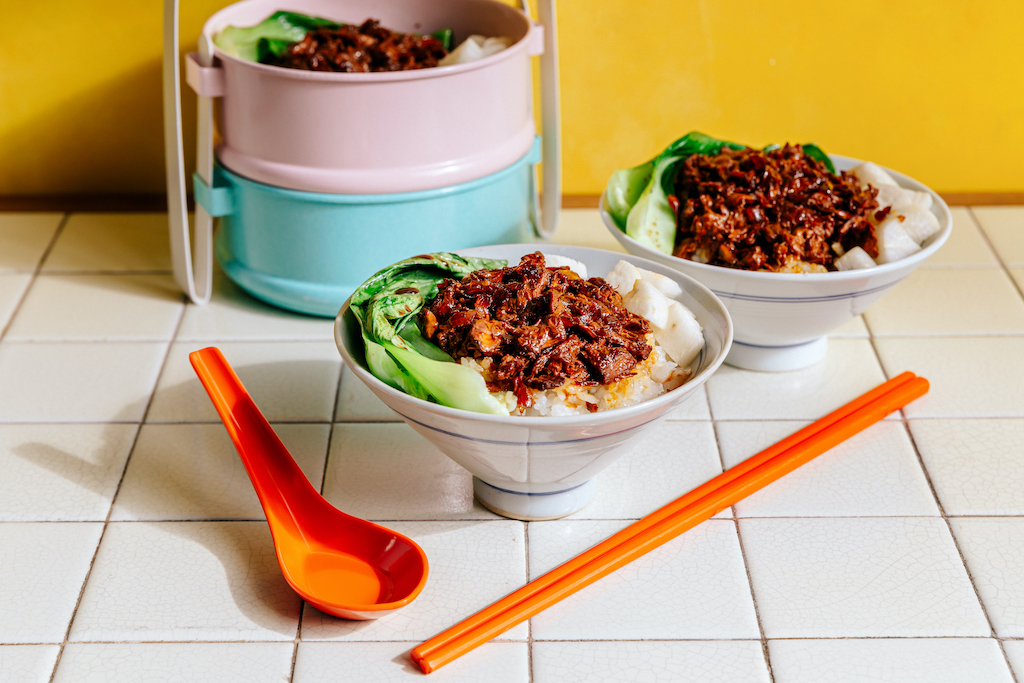Konjac, Millet & Chickpea: 7 Asian Nations Ideally Positioned To Supply Diverse Plant Crops For Global Food Tech Industry
4 Mins Read
In a new report, the Good Food Institute Asia Pacific (GFI APAC) has highlighted 14 alternative protein ingredients that could help not only diversify the range crops used in novel plant-based meat products, but also help bolster the appeal of alternative protein products to a larger consumer base. The report also spotlights the seven Asian countries that are well-positioned to leverage the opportunity, expand cultivation of these ingredients and become leaders in Asia’s fast-growing sustainable protein supply chain.
Titled Asian Cropportunities: Supplying Raw Materials for Plant-Based Meat, the new report, compiled in collaboration with Singapore-based research firm Asia Research & Engagement, argues that the use of new plant ingredients will be crucial to help take plant-based meat alternatives to the next level and to ensure a diversified protein supply that is sustainable in a climate-stricken world, now and in the future.
Conducting an industry-wide analysis, the report finds that the majority of current plant-based protein alternatives are based on two primary sources – soy and wheat. Despite there being no shortage of new plant-based meat products hitting the market that target different types of meat and formats, from beef patties to chicken strips, the researchers argue that an overreliance on a small percentage of available crops among Asia’s enormous huge range of locally sourced ingredients is a missed opportunity in terms of cost, taste and environmental impact.
“It’s a serious question that raw-material suppliers, investors, entrepreneurs, and policymakers should be asking themselves as demand for alternative protein continues to soar across Asia,” writes Ryan Huling, head of communications and programs at GFI APAC, in a post about the report.
The report also notes that the demand for plant-based proteins has shown no signs of abating, even amidst the economic uncertainties brought about by the ongoing coronavirus pandemic, citing the US$230 million in funding Asian food techs have raised this year, according to research undertaken by Green Queen and alternative protein industry expert Michal Klar.

GFI APAC believes that with the number of consumers in the region looking for plant-based alternatives continuing, there lies a major business case for stakeholders across the food value chain to tap into the supply-side potential of Asia to become a leader in producing the raw materials needed to manufacture novel proteins.
Chickpeas is one of the key ingredients featured in the report as a “game changer” crop that is now beginning to gain greater attention, with some startups such as Singapore-based Phuture Foods incorporating the ingredient in its plant-based mince pork and Growthwell Group-backed Israeli food tech ChickP leveraging chickpeas to create a versatile, protein-rich isolate that can be used to develop novel vegan protein products.
While most eyes are on Asia for the sheer size and growth rate of its domestic consumption, we believe that this buries the lede. Even bigger opportunities could be found in growing, processing, and manufacturing alternative proteins, which can then be sold to customers around the world
Elaine Siu, Managing Director, GFI APAC
A key country that is well-positioned to be a major supplier of the crop is Myanmar, who currently accounts for 97% of chickpea production amongst the other nations analysed, which also includes China, Thailand, Singapore, Vietnam, Malaysia and Indonesia.

On the other hand, researchers found that Singapore’s potential to assert itself as a leading plant-based protein ingredient supplier lies in fermentation-based mycoprotein, the ingredient used in Quorn’s products, or lion’s mane mushroom, fungi that boasts a naturally meat-like texture and a strong mineral and vitamin-rich content.
The other 12 raw materials that Asia Cropportunities featured includes sunflower seeds, soybeans, konjac, potato, field peas, lentils, mung beans, wheat, millet, rice and jackfruit.
“While most eyes are on Asia for the sheer size and growth rate of its domestic consumption, we believe that this buries the lede. Even bigger opportunities could be found in growing, processing, and manufacturing alternative proteins, which can then be sold to customers around the world,” explained Elaine Siu, managing director of GFI APAC.
“Industry players are already looking to turn Thailand into a manufacturing hub for plant protein products; Vietnam is an agri-powerhouse that has potential to become a significant raw material supplier; and China is already dominating the world’s soy and pea crushing/processing industry, producing a significant portion of the global soy protein isolate.”
Lead image courtesy of Karana.




